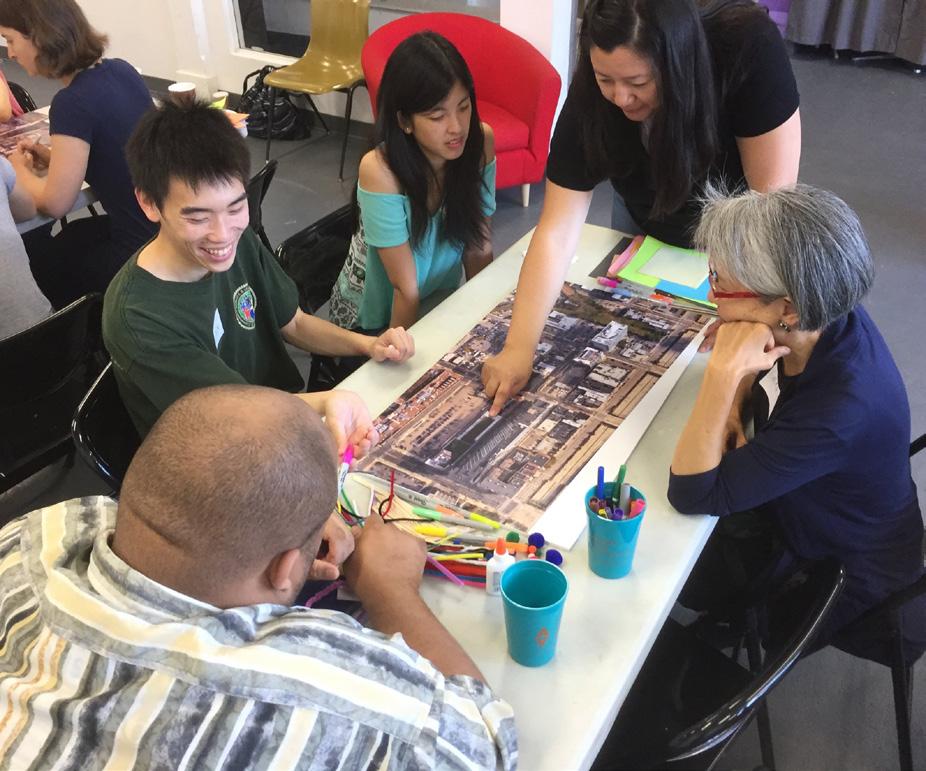
3 minute read
Alexandra Shott
Alexandra Shott
The Architect as a Civic Practitioner

The aspects of our lives which connect us and allow us to expand our perspectives, like art, music, and culture have been experienced at a minimum over the last year. Connection comes in many forms, but the ability to unite over something that brings us joy is a crucial part of the human experience. I personally have been thinking a lot about how architecture has the ability to connect us not only physically, but socially, culturally, and even politically. One of the questions I have asked myself lately is, “How can architects use their work to approach the forming of connections between individuals that goes beyond the spatial realm?” Considering the many elements of an architect’s practice, one might ask themselves where there are opportunities to connect people in more unexpected ways.
Architects go through a complete journey in their practice, beginning with research and ending with the meticulous creation of a structure that will become a semi-permanent piece of our built environment. At the center of an architect’s work is the design process, an enigmatic concept which any designer can relate to. While each individual crafts their own design process over time, it is ultimately what connects all architects and designers together. The concept of the design process is often hard for a non-designer to conceptualize. A lack of general understanding from the public about what an architect does, as well as a lack of consideration by the architect to actively and transparently make communities aware of the design’s intentions, can have the opposite effect of facilitating connection in social, economic, or political environments. This is particularly true in the case of more vulnerable, low-income communities.
Some architectural practices have leveraged the design process to facilitate connections with members of the communities they serve. Often referred to as co-creation, these practitioners invite members of the community to take part in the design process. This type of approach is often exhibited in areas of vulnerability and minority communities. Similar to how connections between people rely on a sense of trust or ability to relate to one another, the practice of co-creation allows everyone involved to connect over shared values and goals for the future of their community. Through activism and advocacy woven into this process, even economic or political connection can be made. This can be said for the designing of projects that seek to establish environmental regeneration, or address issues of gender within a community. Co-creation can also contribute to people of the community developing a profound sense of appreciation and stewardship for the work, with the potential to connect people socially and politically. Practices I have been inspired by such as Department of Places and Kounkuey Design Initiative, as well as practitioners like Liz Ogbu, have established co-creation as an architectural approach that can connect individuals well beyond the physical connection of a building.
Not only does this practice use architecture to connect people in a manner beyond the physical, it can also contribute to increasingly equitable development by architects. There is an immense need for mechanisms in architecture which not only connect people in various ways, but that take into consideration and address larger societal issues. New, or altered approaches to architectural practice is something that I continue to advocate for and investigate how I can incorporate into my design process. Like many individuals, I have faced challenges with assimilating to my assigned context in the past, specifically in predominantly male spaces with jobs or internships I have had. The point being is that most people struggle with forming connections within their environment, and architects can and do have the potential to facilitate healthy connections to the built environment. They have real potential to be a vehicle for connecting people even in ways unexpected.
The importance of architects and architecture being able to facilitate connection is increasingly important and relevant today. Though we have, in life altering ways, lost our connection with one another in physical space over the last year, those connections will be rebuilt. Connection builds understanding, tolerance, and appreciation. It allows us to come together and share the things that bring us joy. Ideation and creation also allow us to form shared bonds with one another. The importance of connection can be looked at by architects not only to bring people together, but to also reframe current approaches and move toward equitable and meaningful practices.










